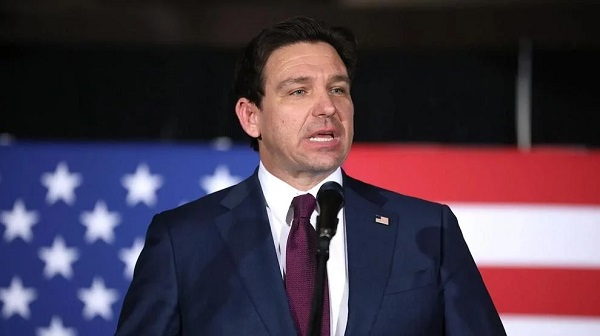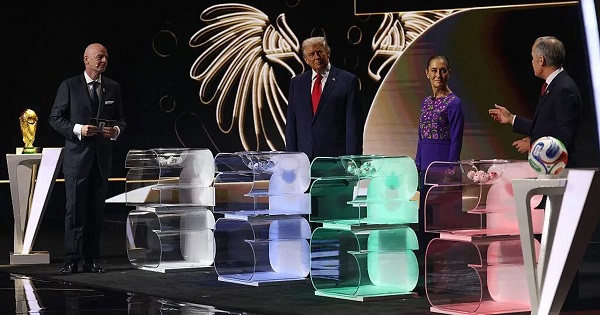Energy
The sudden, newfound support for LNG projects in Canada is truly remarkable.

From Resource Works
The sudden, newfound support for LNG projects in Canada is truly remarkable.
What’s all this? Green-leaning governments, federal and provincial, suddenly speaking in favour of liquefied natural gas (LNG) and other resource development?
It began with British Columbia Premier David Eby telling Bloomberg News that he’s optimistic that LNG Canada’s LNG-for-export plant at Kitimat, BC can be expanded in a way that satisfies its investors but without supercharging the province’s emissions.
This came as LNG Canada was reported continuing to look into possible Phase Two expansion. Such expansion would double the plant’s output of LNG to 14 million tonnes a year.
Industry reports say LNG Canada has been discussing with prime contractors their potential availability down the road. A key, though, is whether and how B.C. can provide enough electrical power.
The LNG Canada plant now is going through a pre-production testing program, and has finished welding on its first “train” (production line). LNG Canada is expected to go into full operation in mid-2025. And Malaysia’s Petronas (a 25% partner) has added three new LNG carriers to its fleet, to gear up for LNG Canada’s launch.
The Eby story noted that he has also thrown his support behind other projects — including hydrogen production and an electric-vehicle battery recycling plant — to create jobs and keep B.C.’s economy growing at a challenging time.
Then came Ottawa’s minister of innovation, science and industry, François-Philippe Champagne, who visited the Haisla Nation in B.C. to support its Cedar LNG project with partner Pembina Pipeline Corp.
Champagne declared: “This is the kind of project we want to see, where there are all the elements supporting attracting investments in British Columbia.”
His government news release said: “This project presents an exciting opportunity for Canada, as it is expected to commercialize one of the lowest-carbon-intensity liquified natural gas (LNG) facilities in the world and represents the largest Indigenous-majority-owned infrastructure project in Canada.”
Champagne went on to tell The Terrace Standard that “We are in active conversations with Pembina and Haisla First Nations. We are saying today that we will support the project, but discussions are still ongoing.’
There had already been reports that Export Development Canada is set to lend Cedar LNG $400-$500 million.
And then came federal minister Jonathan Wilkinson, announcing to the national Energy and Mines Ministers’ Conference in Calgary that Ottawa “will get clean growth projects built faster” by streamlining regulatory processes and moving to “make good approvals faster.”
Wilkinson has long talked, too, of streamlining and speeding up approval processes for resource projects in general, especially for mining for critical minerals. “(We’re) looking at how do we optimise the regulatory and permanent processes so you can take what is a 12- to 15-year process and bring it down to maybe five.”
The Canada Energy Regulator now is inviting input on its plans to improve the efficiency and predictability of project reviews.
All this as Deloitte Canada consultants reported that “the natural gas sector is poised for significant growth, driven by ongoing LNG projects and rising demand for gas-fired electricity generation in Canada.”
And energy giant BP said that under its two new energy ‘scenarios’, world demand for LNG in 2030 grows by 30-40% above 2022 levels, then increases by more than 25% over the subsequent 20 years.
Wilkinson earned pats on the back from some provincial ministers at the Calgary conference, but Alberta’s minister of energy and minerals, Brian Jean, aired concerns over how Ottawa’s new “greenwashing” law would impact the oil and gas sector.
Under it, companies (and individuals) must prove the truth of their public statements on climate benefits of their products or programs, or face potential millions in fines. But the ground rules for this legislation have not yet been announced.
(Jean was not alone. Other critics included CEO Karen Ogen of the First Nations LNG Alliance, who said the new law “could be used as one more tool to discourage resource companies that might seek Indigenous partnerships, and to obstruct Indigenous investment in energy projects, and frustrate Indigenous benefits from resource projects.”)
Wilkinson replied that the Competition Bureau needs to provide information so people understand how the rules apply and what is actionable.
“I think once that is done, this will be, perhaps, a bit of a different conversation. I would expect that the guidance will be something like folks simply have to have a good faith basis to believe what they’re saying. And assuming that is true, I think the sector probably will calm down.”
No pats on the back for Ottawa, though, from the mining industry or the oil-and-gas sector.
Aiming to combat China’s efforts to corner the market in critical minerals, Canada is making it harder for foreign firms to take over big Canadian mining companies. Major mining shares quickly dropped in value.
And Heather Exner-Pirot of the Macdonald-Laurier Institute and special advisor to the Business Council of Canada, says: “We produced less critical minerals last year than we did in 2019. We’re producing less copper, less nickel, less platinum, less cobalt, all these things. And the investment has not picked up; in real dollars it’s almost half of what it was in 2013 . . . and the regulatory system is still a huge barrier to that development.”
On top of that, the petroleum sector has long protested that federal moves to limit oil and gas emissions will, in practice, limit production.
While governments signalled support for LNG, supporters of natural-resource development quickly sent clear messages to governments of all levels.
Calgary-based Canada Action, for one, reminded governments that the oil and gas sector is projected to generate more than in $1.1 trillion in revenue to governments from 2000 through 2032. And that the oil and gas sector supports nearly 500,000 direct and indirect jobs across the country.
Then the industry-supporting Fraser Institute pointed out that business investment in Canada’s extractive sector (mining, quarrying, and oil and gas) has declined substantially since 2014.
“In fact, adjusted for inflation, business investment in the oil and gas sector has declined 52.1 per cent since 2014, falling from $46.6 billion in 2014 to $22.3 billion in 2022. In percentage terms the decline in non-conventional oil extraction was even larger at 71.2 percent, falling from $37.3 billion in 2014 to $10.7 billion in 2022. . . .
“One of the major challenges facing Canadian prosperity are regulatory barriers, particularly in the oil and gas sector.”
Over to government, then, to reduce those barriers.
Following the recent positive moves listed above from two levels of government, there’s an obvious question: Would there happen to be federal and provincial elections in the offing?
Yes: B.C. will hold its next general election on or before October 19. And the feds go to the polls for an election on or before October 20.
Stand by for more promises.
Daily Caller
Paris Climate Deal Now Decade-Old Disaster


From the Daily Caller News Foundation
By Steve Milloy
The Paris Climate Accord was adopted 10 years ago this week. It’s been a decade of disaster that President Donald Trump is rightly trying again to end.
The stated purpose of the agreement was for countries to voluntarily cut emissions to avoid the average global temperature exceeding the (guessed at) pre-industrial temperature by 3.6°F (2°C) and preferably 2.7°F (1.5°C).
Since December 2015, the world spent an estimated $10 trillion trying to achieve the Paris goals. What has been accomplished? Instead of reducing global emissions, they have increased about 12 percent. While the increase in emissions is actually a good thing for the environment and humanity, spending $10 trillion in a failed effort to cut emissions just underscores the agreement’s waste, fraud and abuse.
As a nonprofit, we are dependent on the generosity of our readers.
Please consider making a small donation of any amount here.
Thank you!
But wasting $10 trillion is only the tip of the iceberg.
The effort to cut emissions was largely based on forcing industrial countries to replace their tried-and-true fossil fuel-based energy systems with not-ready-for-prime-time wind, solar and battery-based systems. This forced transition has driven up energy costs and made energy systems less reliable. The result of that has been economy-crippling deindustrialization in former powerhouses of Germany and Britain.
And it gets worse.
European nations imagined they could reduce their carbon footprint by outsourcing their coal and natural gas needs to Russia. That outsourcing enriched Russia and made the European economy dependent on Russia for energy. That vulnerability, in turn, and a weak President Joe Biden encouraged Vladimir Putin to invade Ukraine.
The result of that has been more than one million killed and wounded, the mass destruction of Ukraine worth more than $500 billion so far and the inestimable cost of global destabilization. Europe will have to spend hundreds of billions more on defense, and U.S. taxpayers have been forced to spend hundreds of billions on arms for Ukraine. Putin has even raised the specter of using nuclear weapons.
President Barack Obama unconstitutionally tried to impose the Paris agreement on the U.S. as an Executive agreement rather than a treaty ratified by the U.S. Senate. Although Trump terminated the Executive agreement during his first administration, President Joe Biden rejoined the agreement soon after taking office, pledging to double Obama’s emissions cuts pledge to 50 percent below 2005 levels by 2030.
Biden’s emissions pledge was an impetus for the 2022 Inflation Reduction Act that allocated $1.2 trillion in spending for what Trump labeled as the Green New Scam. Although Trump’s One Big Beautiful Bill Act reduced that spending by about $500 billion and he is trying to reduce it further through Executive action, much of that money was used in an effort to buy the 2024 election for Democrats. The rest has been and will be used to wreck our electricity grid with dangerous, national security-compromising wind, solar and battery equipment from Communists China.
Then there’s this. At the Paris climate conference in 2015, U.S. Secretary of State John Kerry stated quite clearly that emissions cuts by the U.S. and other industrial countries were meaningless and would accomplish nothing since the developing world’s emissions would be increasing.
Finally, there is the climate realism aspect to all this. After the Paris agreement was signed and despite the increase in emissions, the average global temperature declined during the years from 2016 to 2022, per NOAA data.
The super El Nino experienced during 2023-2024 caused a temporary temperature spike. La Nina conditions have now returned the average global temperature to below the 2015-2016 level, per NASA satellite data. The overarching point is that any “global warming” that occurred over the past 40 years is actually associated with the natural El Nino-La Nina cycle, not emissions.
The Paris agreement has been all pain and no gain. Moreover, there was never any need for the agreement in the first place. A big thanks to President Trump for pulling us out again.
Steve Milloy is a biostatistician and lawyer. He posts on X at @JunkScience.
Alberta
Alberta’s huge oil sands reserves dwarf U.S. shale

From the Canadian Energy Centre
By Will Gibson
Oil sands could maintain current production rates for more than 140 years
Investor interest in Canadian oil producers, primarily in the Alberta oil sands, has picked up, and not only because of expanded export capacity from the Trans Mountain pipeline.
Enverus Intelligence Research says the real draw — and a major factor behind oil sands equities outperforming U.S. peers by about 40 per cent since January 2024 — is the resource Trans Mountain helps unlock.
Alberta’s oil sands contain 167 billion barrels of reserves, nearly four times the volume in the United States.
Today’s oil sands operators hold more than twice the available high-quality resources compared to U.S. shale producers, Enverus reports.
“It’s a huge number — 167 billion barrels — when Alberta only produces about three million barrels a day right now,” said Mike Verney, executive vice-president at McDaniel & Associates, which earlier this year updated the province’s oil and gas reserves on behalf of the Alberta Energy Regulator.
Already fourth in the world, the assessment found Alberta’s oil reserves increased by seven billion barrels.
Verney said the rise in reserves despite record production is in part a result of improved processes and technology.
“Oil sands companies can produce for decades at the same economic threshold as they do today. That’s a great place to be,” said Michael Berger, a senior analyst with Enverus.
BMO Capital Markets estimates that Alberta’s oil sands reserves could maintain current production rates for more than 140 years.
The long-term picture looks different south of the border.
The U.S. Energy Information Administration projects that American production will peak before 2030 and enter a long period of decline.
Having a lasting stable source of supply is important as world oil demand is expected to remain strong for decades to come.
This is particularly true in Asia, the target market for oil exports off Canada’s West Coast.
The International Energy Agency (IEA) projects oil demand in the Asia-Pacific region will go from 35 million barrels per day in 2024 to 41 million barrels per day in 2050.
The growing appeal of Alberta oil in Asian markets shows up not only in expanded Trans Mountain shipments, but also in Canadian crude being “re-exported” from U.S. Gulf Coast terminals.
According to RBN Energy, Asian buyers – primarily in China – are now the main non-U.S. buyers from Trans Mountain, while India dominates purchases of re-exports from the U.S. Gulf Coast. .
BMO said the oil sands offers advantages both in steady supply and lower overall environmental impacts.
“Not only is the resulting stability ideally suited to backfill anticipated declines in world oil supply, but the long-term physical footprint may also be meaningfully lower given large-scale concentrated emissions, high water recycling rates and low well declines,” BMO analysts said.
-

 Great Reset2 days ago
Great Reset2 days agoViral TikTok video shows 7-year-old cuddling great-grandfather before he’s euthanized
-

 Daily Caller2 days ago
Daily Caller2 days agoChinese Billionaire Tried To Build US-Born Baby Empire As Overseas Elites Turn To American Surrogates
-

 Alberta2 days ago
Alberta2 days agoSchools should go back to basics to mitigate effects of AI
-

 International2 days ago
International2 days agoAt Least 15 Killed In Shooting Targeting Jewish Community At Australia’s Bondi Beach, Police Say
-

 International2 days ago
International2 days agoTwo states designate Muslim group as terrorist
-

 Business2 days ago
Business2 days agoMajor tax changes in 2026: Report
-

 Digital ID1 day ago
Digital ID1 day agoCanada releases new digital ID app for personal documents despite privacy concerns
-

 Bruce Dowbiggin1 day ago
Bruce Dowbiggin1 day agoNFL Ice Bowls Turn Down The Thermostat on Climate Change Hysteria






